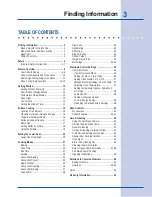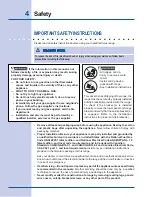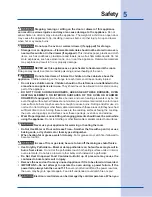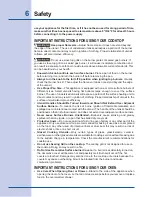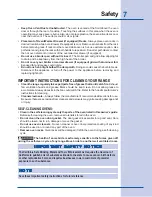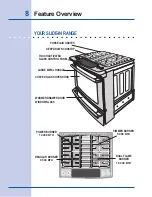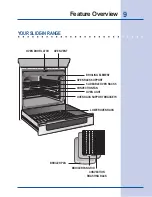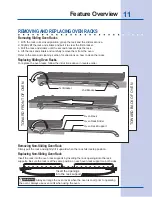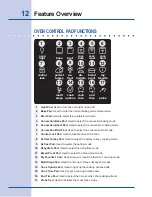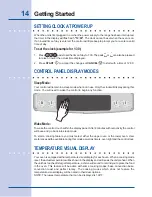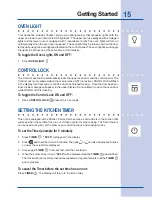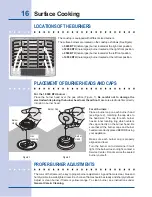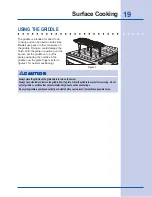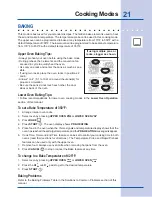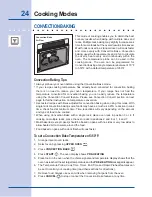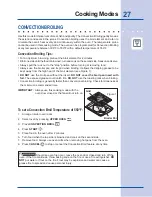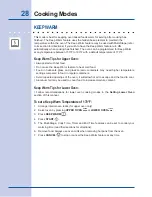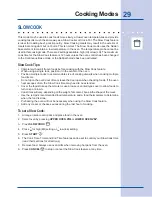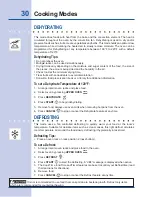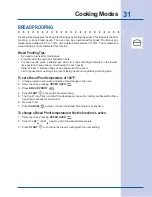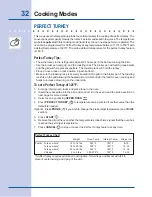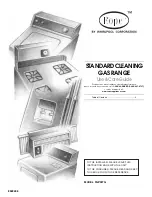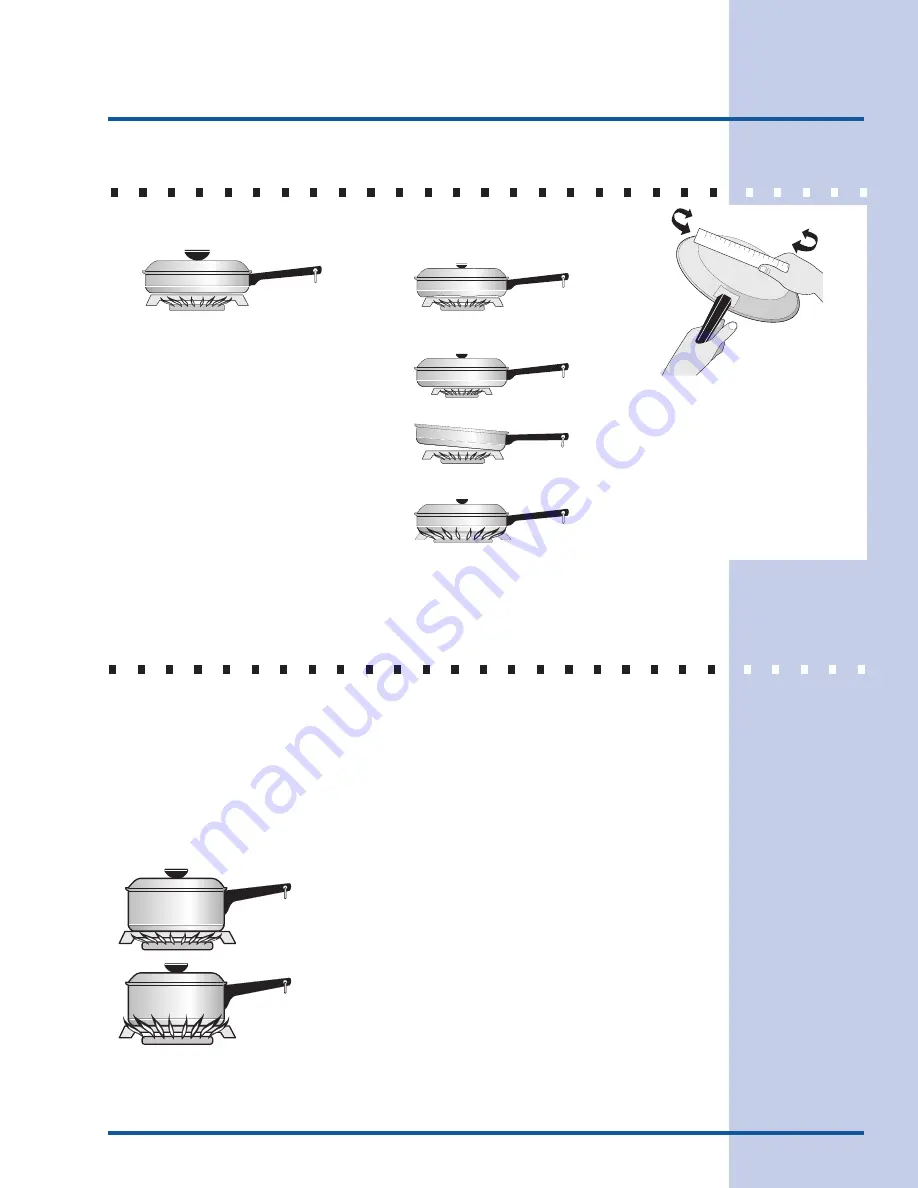
17
RIGHT
WRONG
Surface Cooking
Note:
Always use a utensil for its intended purpose. Follow manufacturer's instruc-
tions. Some utensils were not made to be used in the oven or on the cooktop.
*GOOD
• Flat bottom
and straight sides.
• Tight fitting lids.
• Weight of handle does not tilt pan.
Pan is well balanced.
• Pan sizes match the amount of food
to be prepared and the size of burner.
• Made of material that conducts heat
well.
• Easy to clean.
POOR
• Curved and warped pan bottoms.
• Pan overhangs unit by more than
2.5 cm (1”).
• Heavy handle tilts pan.
• Flame extends beyond unit.
Pans should have flat bottoms.
Check for flatness by rotating a ruler
across the bottom. There should be
no gaps between the pan and ruler.
*
Specialty pans such as lobster
pots, griddles and pressure cookers
may be used but must conform to
the above recommended cookware
requirements.
SURFACE COOKING UTENSILS
FLAME SIZE
For most cooking
, start on the highest control setting and then turn to a lower one to complete
the process. Use the chart below as a guide for determining proper flame size for various types
of cooking. The size and type of utensil used and the amount of food being cooked will
influence the setting needed for cooking.
For deep fat frying
,
use a thermometer and adjust the surface control knob accordingly. If
the fat is too cool, the food will absorb the fat and be greasy. If the fat is too hot, the food will
brown so quickly that the center will be undercooked. Do not attempt to deep fat fry too much
food at once as the food will neither brown nor cook properly.
*Flame Size
Type of Cooking
High Flame
Start most foods; bring water to a boil;
pan broiling
Medium Flame
Maintain a slow boil; thicken sauces,
gravies; steam
Low Flame
Keep foods cooking; poach; stew
*These settings are based on using medium-weight
aluminum pans with lids. Settings may vary when using
other types of pans.
Never extend the flame beyond the outer edge of the utensil.
A higher flame simply wastes heat and energy, and increases
your risk of being burned by the flame.

